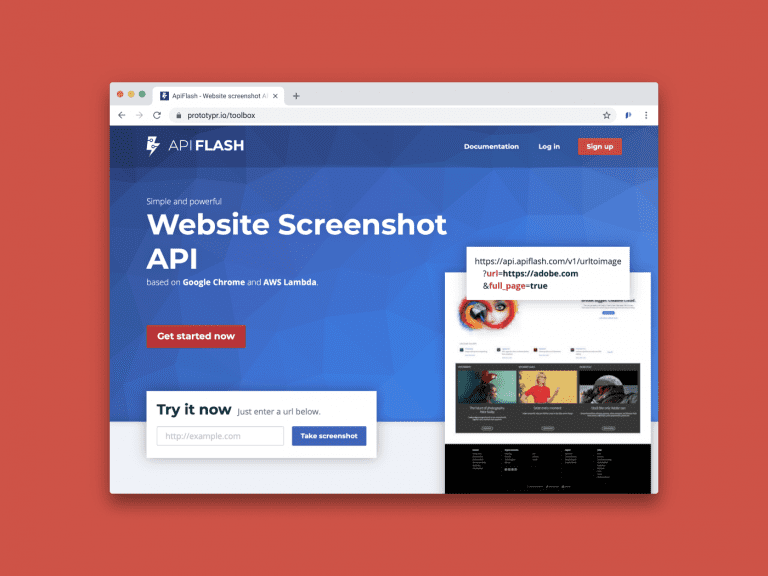
Website testing and monitoring are critical components of maintaining a high-performing, user-friendly digital experience. As websites become more complex, with dynamic content, diverse layouts, and various device configurations, ensuring consistent and error-free Screenshot API performance becomes increasingly difficult. This is where Screenshot APIs come into play. By providing a programmatic way to capture accurate and up-to-date visual representations of a website, Screenshot APIs can greatly enhance testing and monitoring processes, improving both the efficiency and quality of your website’s development and maintenance efforts.
One of the main benefits of using a Screenshot API in website testing is the ability to perform visual regression testing. Visual regression testing involves comparing the current visual state of a webpage to a baseline image to identify any unintended changes or issues that may have been introduced during code updates. By integrating a Screenshot API into your CI/CD (Continuous Integration/Continuous Delivery) pipeline, you can automatically capture screenshots of web pages after every code push or update. These screenshots can then be compared to previously captured versions to detect visual discrepancies such as broken layouts, missing images, or improper rendering. By automating this process, you ensure that your website’s visual integrity remains intact throughout the development cycle.
In addition to visual regression testing, Screenshot APIs are also essential for cross-browser and cross-device testing. Websites must function consistently across various browsers, devices, and screen sizes to provide an optimal user experience. A Screenshot API allows you to capture how a website appears on different devices, browsers, and screen resolutions with minimal effort. For example, you can programmatically request screenshots of your website from Chrome, Firefox, Safari, and Edge, or from different mobile devices such as iPhones and Android phones. This ability to quickly capture these screenshots and compare them ensures that your website functions properly for a wide range of users, regardless of the device or browser they’re using. By catching discrepancies early, you can avoid potential user frustration and improve overall usability.
Furthermore, Screenshot APIs can be used for real-time website monitoring, which is particularly valuable for detecting issues such as downtime, broken links, or layout shifts. Many businesses rely on monitoring tools to track the health of their websites, but these tools often focus on performance metrics or server uptime without visually showing how the site appears to users. A Screenshot API allows you to capture snapshots of your website at regular intervals or whenever specific changes occur, providing a visual record of its current state. If an issue arises, such as a missing image or a page that fails to load correctly, you can quickly detect it through the visual snapshot. This real-time visual monitoring helps ensure that users always experience a fully functional and visually appealing website.
Screenshot APIs also offer valuable insights for quality assurance (QA) teams. QA teams can use Screenshot APIs to generate snapshots of web pages under different conditions, such as user interactions, form submissions, or page load times. These snapshots can be part of a broader QA strategy that tests not only the functionality of a website but also its visual appeal and overall user experience. For example, you can use a Screenshot API to capture how a website looks before and after a user submits a form, or how dynamic elements such as pop-ups and dropdowns render across different screen sizes. By having these visual records, QA teams can easily identify UI bugs, visual inconsistencies, or performance bottlenecks that could negatively impact the user experience.
Finally, integrating a Screenshot API into your website testing and monitoring workflow can significantly improve collaboration across teams. Developers, designers, and product managers can all benefit from visual snapshots when making decisions about updates, bug fixes, or new features. Screenshots provide a clearer, more immediate picture of how a site is functioning, making it easier for team members to communicate and address issues quickly. Instead of relying solely on textual bug reports or technical logs, teams can refer to actual images of the website to better understand the problem and decide on the best solution. This streamlined communication enhances team collaboration, resulting in faster resolution times and a more efficient workflow.
In conclusion, Screenshot APIs are powerful tools for improving website testing and monitoring by automating visual data collection, enabling cross-browser and cross-device testing, providing real-time monitoring capabilities, and enhancing collaboration among teams. By integrating a Screenshot API into your website development process, you can ensure that visual issues are detected early, the user experience is consistently maintained, and your website operates smoothly across various devices and platforms. With the growing complexity of modern websites, leveraging Screenshot APIs for testing and monitoring is no longer just a convenience—it’s a necessity for maintaining a high-quality digital experience.